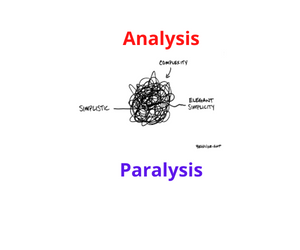This week: news on two things Blockchain and payments, one a real life proof of concept, the other of good intentions. Lastly a thought about how regulation in Europe will force some change in the payments space though not as much as we think.
First, news of a successful proof of concept in the correspondent banking and cross-border payments world. “ANZ and Wells Fargo test distributed ledger tech for correspondent banking”. Well this will be good news as long as Wells Fargo are not using it to have their correspondents open eight accounts.
Jokes aside, the announcement is positive and deserves some thought. First, they are using a combination of platforms, SWIFT and Blockchain, and secondly, because ANZ’s head of digital so frankly acknowledges the limitations: “… the networked nature of both this problem and the proposed DLT solution means the full benefits will only be realised through broad industry participation and adoption”.
My opinion: without central bank digital money (CBDM), this is all just a variation on an old theme. It still leaves us with unsecured receivables and correspondent bank money. This news will be useful if it forces industry action.
Second, at SIBOS, CLS announced its intention to use DLT for its CLS Netting service: “CLS to use Hyperledger Fabric for new payment netting service.” Kudos to my many friends at CLS for making a courageous move. Courageous in the positive way sounded by Apple in their recent iPhone 7 launch that took away the old headphone jack, rather than the courageous of “Yes, Minister” and Yes, Prime Minister”, where it was a sign of impending disaster.
My opinion: I would point out that they are aiming the solution at the wrong target. Bi-lateral netting, which the new service seeks to support, is not really going to move the meter.
For a couple of reasons: we know from exercises past, such as FX Net, that large parts of the market struggle to do the internal work to support netting. Just before CLS came into being, one of the many left arms of Credit Suisse could do it and another could not. Properly processing the accounting postings to reflect the net is easy in principal and hard in practice. Secondly, and much more importantly, bi-lateral is not going to really dent the real world movement of cash. Real world cash movement is what drives overdrafts, which drive liquidity usage, which drives costs. Netting at Nostro level would have a significantly greater impact. More on this in prior posts.
Third item for the week is about PSD 2, the European payments regulation. A central feature of this regulation is forcing banks to open up their payments systems to third parties. In simple terms, they will have to provide an API (application programme interface”) which lets a shopping app reach into your bank account and debit funds.
Using a real life example, if I buy a new washing machine on the Internet from the site MegaDiscountWhiteGoods.fr, then this platform can go to each and every French bank and say: “Bonjour mes amis, le PSD 2 says you must supply me un API so I can debit the accounts of mes clients qui have an account with you.”
There is though nothing in PSD2 that says “Dear European Banks, when a third party sends a debit request via the API you must settle it instantly / in real time even if that means sending the payment through the national / European payment systems to the bank of the beneficiary.” So the Third Parties have a choice of taking settlement risk on the bank of the paying party or having to have an account at every bank so the debit request is processed as a book transfer.
My opinion: PSD 2 will not in and of itself lead to across the board real-time payments. It will only help settlement finality when the result is a book transfer. So it will not help liquidity and the associated costs.
Lessons learned: The real achilles heal of the wholesale banking business is liquidity management and the cost of all the buffers that go with it. Improving that situation needs an industry solution.
The Blockchain offers potential help and a degree of hope in this regard. As ANZ’s expert has noted, it needs industry cooperation to get there.
CLS is to be commended for setting the tone and using Blockchain. It just needs to sharpen its focus and target improvements on the liquidity side of the house.
Previous Posts
Are available on the 3C Advisory website, click here.
Publications
The Bankers’ Plumber’s Handbook
How to do Operations in an Investment Bank, or not! Includes many of the Blog Posts, with the benefit of context and detailed explanations of the issues. True stories about where things go wrong in the world of banking. Available in hard copy only.
Cash & Liquidity Management
An up to date view of the latest issues and how BCBS guidance that comes into force from Jan 1 2015 will affect this area of banking. Kindle and hard copy.
Hard Copy via Create Space: Click here
Amazon UK: Click here
Amazon US: Click Here
Share on:



